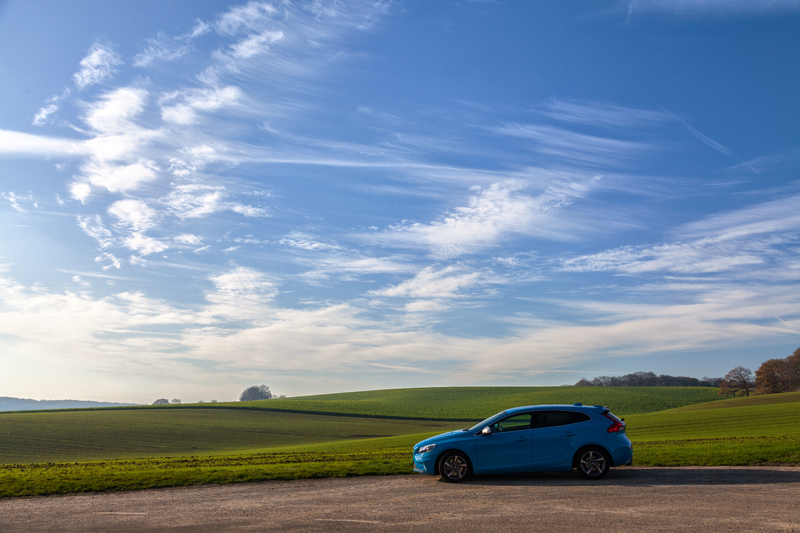Walking is usually the most effective way to move around Dublin’s downtown area because the city is small enough.
Despite its little size, Dublin boasts an excellent and user-friendly public transit system. There are different ways to get around Dublin, including the bus, LUAS, DART, and train systems.
Things you'll find in this article
Getting Around Dublin: Public Transportation Options
Here is a quick guide to getting around and exploring Dublin.
Getting Around On Foot
Dublin is perfect for walking because it is compact. Walking is a great way to take in the views and it allows you to get a firsthand look at the city’s culture and atmosphere.
Make sure you’ve downloaded Google Maps or another mapping app to your phone before heading out to explore Dublin.
Before crossing the street, remember to look right and then left. Pedestrians have the right of way in Dublin, especially at zebra-striped crossings that are signposted (these intersections usually have two flashing lights).
Getting Around by Public Transportation
Leap Card
If you plan on taking public transportation frequently in Dublin (which is strongly encouraged), follow the locals’ lead and do as they do: Get a Leap Card. This is a pre-paid smart card that allows you to travel for less on all Dublin buses, DART, Luas, and commuter trains.
Look for the distinctive green emblem portraying an overly eager frog in mid-leap at one of the city’s 400 establishments. Easons, Kiosk, and Spa shops in Dublin Airport have them.
Some DART and railway stations in the city center also have Leap Card vending machines. Their official website is also a good place to order them.
By Bus

Buses are the most practical mode of transportation around the Dublin city center landmarks next to walking. Dublin Bus (www.dublinbus.ie; [tel] 01/873-4222) runs a double-decker and single-decker fleet.
The majority of them start on or near O’Connell Street, Abbey Street, and Eden Quay on the north side, and Aston Quay, College Street, and Fleet Street on the south side. Look for enormous blue or green lollipops-shaped bus stop markers every few blocks on major thoroughfares.
Look at the destination street and bus number printed above the bus’s front window to figure out where it’s going; those headed for the city center say so in a strange combination of Latin and Gaelic: VIA AN LAR.
Bus service runs throughout the city every day, beginning at 6 a.m. (10 a.m. on Sundays) and ending around 11:30 p.m. Nitelink service runs from midnight to 4 am on Friday and Saturday nights from the city center to the suburbs.
For the most part, buses run every 30 minutes, and schedules are shown on revolving notice boards at bus stations.
Buy your ticket online here.
Related Read:
- 10 Free Things To Do In Dublin, Ireland (For 2023)
- 10 Things To Do in Dublin With Kids (For 2023)
- 30 Best Things To Do In Dublin, Ireland (For 2023)
- 12 Best Bookstores in Dublin
- Top 10 Gardens and Parks in Dublin To Visit
DART and Rail
The iconic DART (Dublin Area Rapid Transit) system is a quick and popular means to go to and from different parts of Dublin. For the majority of its journey, the DART follows the Irish Sea shoreline, making it one of Europe’s most attractive suburban train routes.
DART is an electric rail system that runs along Dublin’s eastern coastline, from Malahide and/or Howth in north Dublin, through the city center to southern districts such as Blackrock, Dun Laoghaire, Dalkey, and on to the seaside towns of Bray and Greystones in County Wicklow.
Trains operate often during peak and off-peak hours, are equipped with free Wi-Fi, and are one of the quickest ways to get about Dublin, not to mention the hidden beaches, seaside villages, and harbor eateries located along the city’s magnificent coastline.
Dublin also serves as a hub for people who want to go around Ireland by train. Cork, Galway, Limerick, Killarney, Belfast, and Sligo are just some of the intercity destinations served by Heuston and Connolly, the city’s two main stations.
Where to book/buy a ticket: Book your ticket online here.
Related Read:
- 11 Must-See Castles In Dublin, Ireland
- 19 Best Dublin Landmarks To Visit
- Dublin Tours: The 10 Most Unusual Tours In The City
- 3 Days in Dublin: Itinerary With Maps and Tips (For 2023)
- 10 Best Day Trips From Dublin (Cost, Transport and Tips For 2023)
By Tram
Dublin’s light-rail transit system, Luas, is a fast, dependable tram system that runs on two lines throughout the city. Luas (Irish for “speed”) tickets can be purchased at street vending machines at each Luas stop. Luas also accepts Leap Cards, which come with a discount.
Luas operate from 5:30 a.m. to 12:30 a.m. Monday through Friday, 6:30 a.m. to 12:30 a.m. Saturday, and 7 a.m. to 11:30 p.m. Sunday.
There are two lines: The Green Line goes southeast from St. Stephen’s Green to Sandyford and Brides Glen in the south, while the Red Line extends southwest from Connolly Railway Station to the Saggart and Tallaght neighborhoods.
The cost of your ticket is determined by the length of your travel and the number of city zones it passes through. A single peak-time journey within the city center costs €1.54, and rides to other areas cost €2.50. For more information, visit the Luas website (www.luas.ie; [tel] 1850/-300-604).
By Taxi
Taxis are considered part of Dublin’s public transportation system and finding one has been considerably easier since deregulation.
Taxi drivers in Dublin have a reputation for chatting, joking, and sharing their (sometimes unsolicited) thoughts on anything from politics to family affairs.
However, there are unscrupulous taxi drivers known to take naive tourists down the less picturesque but more profitable route. Still, this isn’t common.
In Dublin city, taking a taxi is advisable, especially at night if you want to avoid wandering through dimly lit side streets, or at any time of day if there is no other direct option.
Taxis are, of course, more expensive than all other modes of public transportation, but keep in mind that you pay for the entire cab, whereas other services charge per person. Sharing a taxi with your fellow passengers might be a very cost-effective option.
Base fare is €4 with additional €1.95 per extra kilometre.
Related Read:
- 8 Best Brunch Restaurants In Dublin
- 13 Best Food Markets In Dublin
- 10 Good and Cheap Restaurants in Dublin
- 20 Best Pubs In Dublin, Ireland
Other Ways to Get Around Dublin
Car Rental
Dublin has a lot of car rental options. Hertz, Budget, Avis, Payless Car Rental, and Europcar (all located in Terminal 1’s Arrivals Hall and Terminal 2’s Multi-Storey Car Park), as well as Dooley, are available to passengers arriving at Dublin Airport (based in the Arrivals Hall of Terminal 1).
Furthermore, Thrifty, Enterprise, and Sixt offer pre-booked automobile rental services in Terminal 1’s Arrivals Hall. Meet-and-greet services are also available at the Dublin and Dun Laoghaire ferry terminals.
It’s also recommended to rent a Sat Nav (Satellite Navigation) to gain your bearings if you’re unfamiliar with Dublin’s motorways and byways, particularly for those who aren’t used to driving on the left. Simply phone the automobile rental firm before you reserve if you have any queries about how it works.
Dublin Car rentals usually start at around €23 per day, depending on brand model and type.
Where to Book: Rentalcars
Check out our guide if you want to drive in Ireland.
Related Read:
- Dublin Airport To City: Airport Transfer Options For First-Time Visitors
- Dublin To Limerick: How To Travel To Limerick From Dublin
- Dublin To Belfast Transport Options
- Dublin To Galway Transport Options
Bike Rental
Bicycling is an excellent model of transportation in Dublin. Dublinbikes, a city bike service with stations all across the city, is worth a look. A terminal with instructions on how to hire a bike is located at each stop.
You can rent a bike with your Leap Card and return it at any time. Stations are open from 5:00 a.m. to 12:30 a.m., and bikes can be returned at any time. A 3-Day Dublinebike ticket is also available for €5. Visit the official webpage (https://www.dublinbikes.ie/) for more information on the Dublinbike system.
Bike rentals in Dublin start at €10 per hour depending on the type.
Motorbike Rental
Meanwhile, dedicated motorcyclists will find that the freedom of a rental bike is ideal for exploring not only the city but also the surrounding scenic attractions.
Celtic Rider was the first motorcycle rental business in Ireland. It rents out a variety of world-class touring bikes, with complete insurance and unlimited miles included in the rental price.
Bike on Board is another service that arranges transportation of your bike before your vacation. It saves you time by avoiding the need to ferry your bike.
Motorbike rentals in Dublin start at €135 for 3 to 6 days, depending on the brand, model, and type. The fees also include insurance and European-approved ECE helmets.
Related Read:
- Dublin Travel Guide: Best Places To Stay, Eat And See (For 2023)
- Is Dublin Safe? What You Need To Know (2023)
- Is Dublin Expensive? What You Need To Know (2023)
- Renting In Dublin – Guide For Newcomers
- Living In Dublin: The Ultimate Guide For Expats
- Where To Stay in Dublin, Ireland

Hi, I’m Christine – a full-time traveler and career woman. Although I’m from the Philippines, my location independent career took me to over 60 countries for the past 12 years. I also lived in 4 continents – from the Caribbean, South East Asia, Africa and now in Europe. But despite living in several countries, my love for Ireland remains the same. A country that had been a part of my life since I was 14 because of my love for Irish music and bands. Ireland Travel Guides was born because of this passion and hopefully, in some little ways, this website will be able to help you on your next trip to Ireland.



